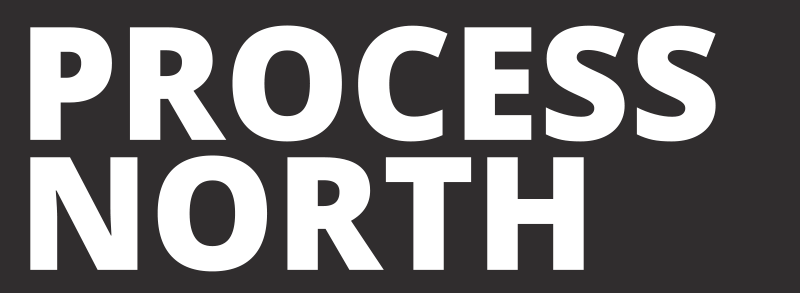A bug, or a feature?
Marcel Stoetzler, editor, Critical Theory and the Critique of Antisemitism, Bloomsbury Academic, London / New York 2023, pp xi and 293.
Reviewed by Mike Makin-Waite
Too few attempts to counter contemporary forms of antisemitism, prejudice and racism are informed by the methodology of the Critical Theorists of the Frankfurt School. Between 1943 and 1950, having fled from Nazi Germany to the USA, Max Horkheimer, Theodor Adorno and a number of their colleagues worked on a comprehensive study of the prevalence of antisemitism among American workers, commissioned by the Jewish Labor Committee, and on the wider ‘Studies in Prejudice’ programme which was commissioned by the American Jewish Committee’s Department of Scientific Research. Resulting books included Prophets of Deceit by Leo Löwenthal and Norbert Guterman (1949) and The Authoritarian Personality by Adorno and a team of co-authors (1950).
Marcel Stoetzler introduces the ‘proudly old-fashioned volume’ he has edited by observing that the Frankfurt School’s pioneering work is too often remembered by being forgotten: ‘Oh, we did that already, way back, didn’t we?’. Meanwhile, he says, too much ‘empirical research slumps back into the lazy habits of conceptless empiricism’. It is therefore time to ‘bring Critical Theory back in’ – and the chapters Stoetzler has assembled are packed with insights which confirm the ongoing relevance of the methodology of Horkheimer, Adorno et al – and, sadly, the sharp need for this to be applied to contemporary forms of antisemitism, as well as to different and variously specific expressions of racism, prejudice, antipathy and hatred towards people who are, in Christine Achinger’s phrase, ‘other “others”’.
Stoetzler draws a distinction between Critical Theory’s critique of antisemitism and ‘broadly liberal critiques’. The liberal sees antisemitism as ‘a flaw in a society which should better live up to its professed ideals’. For Critical Theory, by contrast, ‘antisemitism is not a bug but a feature. It aims not to remove the bug but the system that features it’.
Jordi Maiso’s chapter assumes that there is no ‘eternal antisemitism’: ‘the task of any social theory worth its salt is to explain how antisemitism takes root, ever anew and differently, within concrete socio-historical situations’. He highlights the analysis which Horkheimer and Adorno set out in Dialectic of Enlightenment, their 1944 book which creatively combines non-reductionist Marxism with Freudian insights. This work identifies how ‘for antisemites, the figure of the Jew is little more than a screen onto which to project repressed psychic material … they attribute to their victims what they must restrain in themselves’.
Maiso’s summary of the psychoanalytic analysis of antisemites by Adorno, Horkheimer and their collaborator Otto Fenichel combines clarity and nuance: Fenichel’s contribution included an explanation of how antisemitism can arise where there is a ‘disproportionate gap between social power and individual impotence’, which ‘increases the volatility of the libidinal economy, leading to an all-pervasive anxiety and marked desire for security that crystallises in … “narcissistic neediness”’. This neediness is then shaped and mobilised by antisemitic movements. Such analysis does not lead to easy solutions, and in fact serves as a warning against simplistic approaches: ‘insofar as antisemitism is regarded as a “prejudice” it would be unwise to assume that it can be defeated by superior argumentation or the refutation of its premises’.
Before the First World War, the German socialist leader August Bebel and his followers promoted the insight that antisemitism was, amongst other things, ‘the socialism of fools’. Amongst its other qualities, Werner Bonefeld’s chapter summarises – and critiques – the kind of arguments that Bebel identified as ones which misunderstand the reasons for economic inequality and thus lay the basis for some workers’ anger and antipathies to be misdirected towards Jews: ‘a spell-bound critique of capitalism … attributes the fateful movement of the economic forces to the individual will of the greedy money-maker … it is founded on the rumour that the capitalist economy has been corrupted by some greedy self-seekers … this critique of capitalism is entirely false to the point of murder’.
There are further considerations of ‘left-wing antisemitism’ in the book (a controversial subject, amongst other reasons, because some people see it as a problem which is being exaggerated, whilst others see it as being downplayed). Matthew Bolton argues that scattered antisemitic references in J.A. Hobson’s work (work whose main themes have been praised in recent times by both Jeremy Corbyn and Tony Blair) are not egregious aberrations but are ‘intrinsically connected to his broader theory of domestic and global capitalism’.
Stoetzler’s own chapter attempts to make ‘critiques of “left-wing antisemitism” more precise’ through analysing the logics of the key values articulated through the French Revolution (liberté, fraternit , egalité); distinguishing between ‘three principal types of antisemitism’ (Conservative-Defensive; Liberal, Democratic and Socialist; and Conservative-Revolutionary); and by explaining his assertion that ‘the most important text for understanding modern antisemitism is Marx and Engels’ Communist Manifesto’(even though ‘antisemitism is not mentioned in it’). Dialectical method and internationalism are needed now because ‘the helplessness of most liberals and socialists in dealing with antisemitism in their own ranks stems not least from their lack of a theoretically grounded critical concept of capitalism with which to debunk the antisemites’ pseudo-anti-capitalism’.
Matthew Bolton and Frederick Harry Pitts close the book with a chapter on ‘the antisemitism crisis which erupted in the British Labour Party under Jeremy Corbyn’s leadership’. Many left-wingers (and not only Corbynistas) will disagree with some of the authors’ polemical points – but ongoing consideration of this period, which tends still to generate the most binary position-taking, should take account of Bolton and Pitts’ carefully collated evidence, and of the reasons they give for detecting the danger of ‘elements of antisemitism’ as being all-too present within the ‘“truncated” or “foreshortened” critique of capitalism that has been a feature of the British socialist and liberal left since its formation’.
Amongst the chapters in the second part of the volume, which ‘extend the Frankfurt School-inspired perspective to a range of contemporary matters’, this reviewer found Joan Braune’s chapter particularly stimulating (her new Understanding and Countering Fascist Movements: From void to hope will be the next book to be reviewed on this website). Braune’s contribution to Stoetzler’s collection considers the reasons for irrationalism by focussing on bizarre examples of the conspiracy theories which have been ‘a particularly important driving factor in fascist recruitment in the current period’. Braune points out that ‘some of the most whacky conspiracy theories, and the ones that are easiest to laugh off, concern extraterrestrial life’.
Braune explains that, nevertheless, these should not be dismissed and laughed off: they ‘need to be taken seriously’, as they are growing in the ‘conspiritual’ spaces where people combine ‘New Age spirituality with far-right conspiracy theories’. Such blendings ‘often surprise people who tend to associate New Age spirituality and holistic wellness practices with femininity and the left, while associating right-wing conspiracy theories with masculinity and the right’.
Braune draws on Adorno’s early-1950s analysis of the Los Angeles Times astrology column in her consideration of David Icke’s ‘theories’ about ‘reptilians’ and the enthusiasm of some far-right activists for the ‘perplexingly named’ History Channel’s Ancient Aliens series, which offers ‘evidence’ for extraterrestrial aliens’ involvement in past human historical events. One significant resonance that Braune identifies between Icke’s ‘arguments’ and the language of the astrology column which Adorno discussed is the promotion of ‘claims of the individual’s power to control events through “magnetism” and “charm” – as though the individual can direct the course of events merely through the power of belief’, a cruel myth which is similar to that promoted through many of the ‘inspirational’ and ‘motivational’ posters pinned up in our workplaces. When things do not in fact go as the individual had wished, an explanation is needed – and the notion that there are hidden, malevolent, ‘beings’ exercising powers in ways which frustrate your hopes can serve to account for ‘the individual’s sense of powerlessness in late capitalism’. Braune draws out the logic – and attraction – of the conspiracists’ dangerous nonsense about aliens and reptiles, of which we must make sense: ‘if positing their existence constructs a worldview in which you can be a hero fighting a subhuman enemy, then what [the conspiracy theories] provide is less like shallow consolation and perhaps an occasion for violence’.
Though it is clearly written and well-edited, the ‘academic’ character of Critical Theory and the Critique of Antisemitism means that the book will not prove immediately accessible for many of those who are working to counter prejudice and discrimination. Nevertheless, ways need to be found to animate its insights and concerns within practice. As Patrick Ahern writes, the current strength of ‘right-wing populism comes with the alarming threat of violence and the breakdown of even formal democratic structures … the false belief that the resonance of such authoritarian populism was restricted to a fringe group of “deplorables”, as Hillary Clinton famously referred to this movement, only serves the self-gratification of those hoping to help maintain the untenable status quo … resistance to this phenomenon can only come with careful and sustained analyses of the social, historical, economic and political causes that create the political arena of a mob mentality that infiltrates not only right-wing but also left-wing populism’.
Given the high quality and value of the book, it may seem churlish to conclude with some negative comments. Nevertheless, it should be pointed out that Ahern’s use of ‘right-wing populism’ and ‘left-wing populism’ as mirroring terms could itself benefit from fuller critical assessment: such mirroring can suggest that these two categories of populism have comparable characters and logics – as well as implying that liberal centrism is a desirable and uncomplicated norm. It is also unfortunate that the book does not properly signal how the critical approaches which it highlights can and should be applied in specific terms to the problem of the virulent antipathies and hatreds currently directed at Muslim people. Nearly all of the handful of references to Islam and Muslims in the book relate to specific political movements of which particular authors disapprove: the Egyptian Muslim Brotherhood, Hamas, Hezbollah and ‘assorted British Islamists’. That said, Stoetzler himself offers a brief but useful warning against the simplistic stereotyping of Muslims, as – indirectly – does Johnathan Catlin in his surefooted revisiting of ‘the Frankfurt School’s theory of antisemitism in light of current debates’. These debates include the important and fraught one ‘about the boundary between legitimate critique of Israel and antisemitism’ – a debate which has only become more important and more fraught since this book went to press.
Published April 2024.
Illustration: Max Horkheimer (1895-1973), who served as director of the Institute for Social Research (the central institution of the ‘Frankfurt School’) for four decades.


